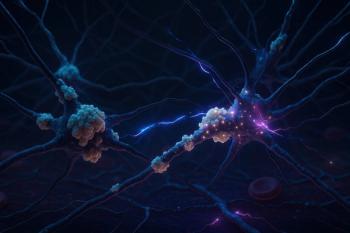
Whatever Happened to Psychopathology?
American psychiatry reexamines its roots in psychopathology, challenging DSM's validity and advocating for a return to understanding mental illness.
CONCEPTS IN PSYCHIATRY
Do you know who Karl Jaspers was? If you heard his name, do you know what he was known for in psychiatry? If the answer to either question is no, then you, reader, will greatly benefit from this column.
American psychiatry is bereft of knowledge about the basic nature of the content of its conditions: what people experience when they have psychiatric states, how it feels to them, how it looks, and how it relates to other conditions. In other words, the field is uninformed about psychopathology.
What is psychopathology? It is not diagnosis, and it is certainly not the DSM. DSM in its third revision—DSM-III, from 1980, which is the basis for all following versions—in fact killed psychopathology, as one of the leaders of DSM-III admitted 2 decades later. Dr Ghaemi was there at the conference on philosophy and psychiatry in London where Nancy Andreasen, former professor and chair of psychiatry at the University of Iowa, gave her talk, “DSM and the death of phenomenology,” which she later published as a paper.1 DSM-III, IV, and 5 killed phenomenology—which is a central feature of psychopathology—in the United States. We have been living with a smelly corpse ever since. That is modern psychiatry.
But what does this mean and how did it happen? First, let us understand the importance of psychopathology. There is a hierarchy here, as shown in the Figure.
Your treatment is only as good as your diagnosis. If your diagnosis is wrong, or not real, or not valid, then your treatment will not work well. Diagnosis is based on its constituent parts, including signs and symptoms and course of illness, ie, psychopathology. If your psychopathology is wrong, or not real, or not valid, your diagnosis will be wrong, not real, not valid.
Everything depends on psychopathology. And American psychiatry essentially ignores psychopathology. Why? Because we have falsely believed for half a century that DSM is all we need to know. Skip psychopathology. We have all the diagnoses laid out before us with clear criteria representing, supposedly, the underlying psychopathology. That would be fine if all the criteria were correct. The problem is most of the criteria are wrong, and therefore, DSM diagnoses are mostly false.
This sounds controversial but it is merely descriptive. It is a descriptive fact that DSM diagnoses have either been proven to be invalid, or not proven valid, using the standard diagnostic validators of symptoms, course of illness, genetics, and biological markers.2,3
For those who are familiar with diagnosis research, the concept of diagnostic validators is standard and not controversial. If applied to DSM categories, it is a fact that these diagnoses are either invalid (proven false) or not proven valid (not proven true).
So, we cannot assume the DSM criteria are correct; in fact, many are proven false. We cannot assume the underlying psychopathology and simply apply the diagnoses as we do. But American psychiatry is not aware of these problems, and thus we ignore psychopathology.
That is how, Andreasen described, DSM killed phenomenology and psychopathology.
So, what should we do? We need to put DSM aside and go into its bases: let us study diagnostic criteria and see if they are true or not. Let us get back to studying psychopathology. And this means learning about it from over a century of work outside of DSM.
We in American psychiatry (and the related disciplines) need to unlearn standardization of the DSM and relearn psychopathology, in its past (history), its present (practice), and future (research). That task begins with remembering where we came from. Before DSM-III remade psychiatry into a manual of checklists, the field was rooted in a rich tradition of phenomenology and nosology.
In the early 20th century, psychiatry was defined by its commitment to understanding mental illness through close clinical observation, longitudinal course, and careful description. The great German thinkers like Emil Kraepelin and Karl Jaspers treated psychiatry as both a science and a philosophical discipline. They emphasized 2 core methods: nosology, or the classification of illnesses based on course and outcome, and phenomenology, the empathic understanding of a patient’s subjective experience.
This tradition began to fade in the latter half of the 20th century. With the publication of DSM-III in 1980, American psychiatry moved away from these conceptual foundations. Descriptive diagnosis was replaced by operational criteria designed to increase diagnostic agreement among clinicians. This shift improved reliability, but it sacrificed validity.3 Agreement is not the same as truth. A diagnosis may be reliably assigned, but that does not mean it corresponds to a real illness with a distinct natural history, course, and biology.
The result is a field that now looks very little like the psychiatry of Kraepelin and Jaspers. Today it resembles a system of symptom management focused on checklists and categories that often lack clinical or scientific coherence. Key distinctions have been lost. Clinicians are less likely to know the difference between manic-depressive illness and neurotic depression, or between cyclothymia and borderline personality disorder. These are not esoteric distinctions; they matter for understanding the patient and for selecting the right course of treatment.
In place of clinical reasoning and longitudinal understanding, modern psychiatry has embraced short-term pragmatism. Diagnoses are increasingly defined by what is clinically “useful” or pragmatic rather than by established disease validators.2 Despite the promise of being more scientific, this model has led to widespread diagnostic overlap, inflation of comorbidity rates, and a classification system that lacks scientific validity. DSM diagnoses rarely map onto biomarkers, treatment response, or long-term prognosis.
Adding to this problem is the influence of postmodern thought, which promotes skepticism toward objectivity and truth. In psychiatry, this has encouraged the view that diagnoses are social constructs rather than attempts to identify real diseases. In psychoanalysis, postmodernism has encouraged intersubjective models that interpret pathology as a product of relational dynamics rather than internal disturbance, often obscuring the reality of psychopathology. The act of diagnosis is sometimes portrayed as morally suspect or inherently stigmatizing.
We believe psychiatry must reclaim its roots in psychopathology. This means returning to careful observation, conceptual clarity, and clinical humility. It requires attention not only to what symptoms are present, but to how they are experienced and how they evolve over time. It also means placing greater emphasis on diagnostic validity and what is true, and less emphasis only on reliability, or agreeing on (false) criteria.
With this column, Concepts in Psychiatry, we will revisit the foundations of psychiatric diagnosis and theory. In our next column, we begin with a basic but urgent question: what is mental illness, and how can we know it when we see it?
Dr Ghaemi is a professor of psychiatry at Tufts University School of Medicine and a lecturer on psychiatry at Harvard Medical School.
Dr Ruffalo is an assistant professor of psychiatry at the University of Central Florida College of Medicine in Orlando and adjunct assistant professor of psychiatry at Tufts University School of Medicine in Boston, Massachusetts.
References
1. Andreasen NC. DSM and the death of phenomenology in America: an example of unintended consequences. Schizophr Bull. 2007;33(1):108-112.
2. Robins E, Guze SB. Establishment of diagnostic validity in psychiatric illness: its application to schizophrenia. Am J Psychiatry. 1970;126(7):983-987.
3. Ghaemi SN. Taking disease seriously in DSM. World Psychiatry. 2013;12(3):210-212.
Newsletter
Receive trusted psychiatric news, expert analysis, and clinical insights — subscribe today to support your practice and your patients.











